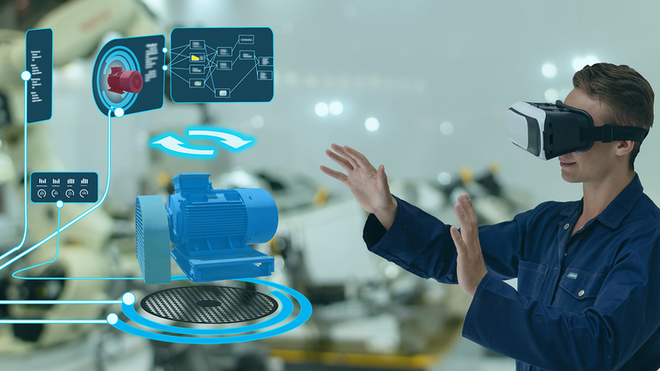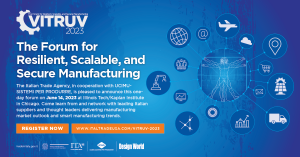THIS INTERNATIONAL ON DEMAND SUMMIT IS AN INDUSTRY… More
Outlook 2020: From Re-set To Re-invent
 Due to the spread of the novel coronavirus or COVID-19, the outlook for 2020 set out at the beginning of the year is now moot. An exogenous shock is hitting the USA and the global economy as a whole to an unknown extent. What is special about the new economic crisis is that there have been simultaneous supply and demand shocks which have commanded not only a reduction in jobs, output, and revenues but also a strong volatility and enormous losses of value on the financial markets.
Due to the spread of the novel coronavirus or COVID-19, the outlook for 2020 set out at the beginning of the year is now moot. An exogenous shock is hitting the USA and the global economy as a whole to an unknown extent. What is special about the new economic crisis is that there have been simultaneous supply and demand shocks which have commanded not only a reduction in jobs, output, and revenues but also a strong volatility and enormous losses of value on the financial markets. As a result of these shocks, the post COVID-19 manufacturing ecosystem is expected to create a paradigm shift both in terms of where and how one manufactures, increasing the attention on worker safety as a major concern, side by side with cost-effectiveness and profits.
Economists told the Boston Herald newspaper for an April 19th, 2020 article, that many USA corporations are considering to bring manufacturing out of China and in some cases back to the United States citing such a shift as being a key component to reviving the coronavirus-stricken economy. The return of portions of manufacturing activities to the USA would be an economic boon and also fulfill a vital national security interest to help combat future pandemics and public health crises, economists said. “Out of this black swan event, I do think the good news is it will really bring more manufacturing back to America and get people back to work,” said Professor Nada Sanders of Northeastern University’s D’Amore-McKim School of Business. Low-interest loans and tax incentives from the federal government would encourage companies to bring jobs back to the USA from China, Sanders added.
Automation will be a key component of the effort to revive domestic manufacturing. Previous off-shoring trends were fueled by a race to the bottom in terms of labor and productivity costs. Now that advances in automation and robotics have drastically increased productivity across a number of manufacturing processes and salaries are shifting upwards in China and elsewhere, many such processes can be more cost-effectively reshored and deployed domestically. Automated manufacturing will not bring back demand for low-skilled labor rather it will create new jobs and opportunities for digitally-savvy workers.
In some instances, this will be through the use of increased automation technologies and machinery such as last year when Amazon started to use Italian machines at dozens of its warehouses allowing for contactless packaging to take place. This is a critical feature in the post COVID-19 manufacturing ecosystem. The machines are manufactured by the Italian firm CMC Srl and are called CartonWrap, can pack up to 900 boxes per hour, and require two operators, one to load customer orders and another to stock cardboard and glue.
“COVID-19 has fundamentally disrupted our notion of normal”, said Marina Gorbis, executive director at The Institute For the Future, a think tank based in Silicon Valley, during an ABC News April 7th interview, “and we are just in this first stage of the crisis “Reaction”’, which will be followed by stage 2: “The Re-set"—a time when we put the crisis into a larger perspective and assign meaning to it. And then finally stage 3: "Re-invention". If we can learn anything from this crisis it is that stage 3 must include building new systems that reward and incentivize long-term thinking and acting”.
This “Re-set” is already underway, for example in the 3D Printing manufacturing ecosystem as USA-based competitors are partnering with local universities to address the COVID-19 crisis. Tangible Creative, which has 100 3D printers at its warehouse in Newark, New Jersey, has partnered with Brooklyn-based competitor MakerBot and Columbia University to create the COVID Makers Response coalition. The group is currently printing roughly 2,000 face shields a day, which volunteers in Manhattan assemble and send to more than 30 hospitals in the area. “Open source” could contribute to boosting this kind of manufacturing ecosystem as there is a huge potential network of 3D printers across the country that can be tapped into. Nearly 600,000 consumer 3D printers priced at less than $5,000 were sold in the USA in 2018, according to a report issued in 2019 by the Federation of American Scientists. Tangible Creative, HP and Shapeways have all made their design files available online for anyone that is able and willing to print them. "It's not like you need a mold," said Eugene Chang, Tangible's co-founder, and industrial design director. "You have this digital file and you can just send it to people, and they can hit print, just like how you send an email and can print it out on a 2D printer."
Another advantage of technologies relying heavily on automation is that they contribute to stabilizing productivity, output and sales and this benefits also management and employees, who can overcome more easily emergencies, including those due to Covid-19, and hence minimize risks of disruption.
History teaches us that short term measures taken in response to global crises lead to changes that last for decades. What most of us used to consider normal has already fundamentally started to shift. Understanding and acting on the new paradigms will afford ample opportunities for growth and we believe that manufacturers and service providers like those we mentioned, i.e. CMC, Tangible Creative, and Amazon can be looked at as good practices in that direction.
Related Articles:
Recent News

























